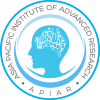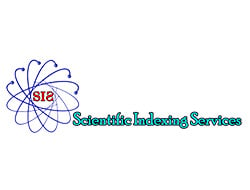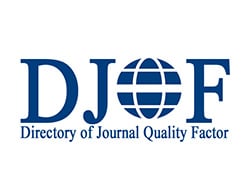The Asia Pacific Journal of Contemporary Education and Communication Technology stands as the world’s leading publication regarding the ever-broadening divisions in these two fields. The Journal serves as a platform for exploring emerging trends of technological potential as well as being the leading publication on the most recent educational techniques, discovery and growth.
Contemporary Education: Extensive categories of significance within educational development are increasingly being utilized in order to accelerate the learning process and to delve into the profound avenues of academic capability. The Journal draws upon these diverse categories in order to promote a continuous dialogue of learning techniques and processes. The publication provides an ever-evolving platform for information and insights surrounding the expansive scope of Contemporary Education. Traditional education has evolved to encompass a diverse array of potential learning techniques that may be utilized to heighten educational achievements. The APJCECT allows for the compilation and dissemination of these exciting educational advancements as they continue to evolve worldwide.
The major divisions of the educational infrastructure are regarded and discussed within the APJCECT. The Journal’s material encompasses a varied array of subject matter, including Educational Psychology, Mathematics Education, Liberal Education, Health Education, Special Education and Secondary Education, together with scholarly insights, research and progress. The Journal attaches the utmost importance to the improvement, advancement and global implementation of educational techniques. Supported by scholarly research, methodology, data and conclusions, the APJCECT continues to foster the necessary educational growth to be utilized and implemented worldwide.
Communication and Technology: are globally recognized as divisions of radical projected growth, and their scope of development continues to evolve at an ever-increasing rate. At the same time, innovation within arenas such as Computing, Information Systems, E-Commerce and Software Design have created the need for a publication that can collate the expansive data and intelligence surrounding today’s Information and Communication sectors.
The Journal is diligently compiled to present the most significant ground-breaking developments and technologies associated with global communications and computing. Grid and Cloud Computing, IT-based Convergence Technology and Services, Software Design and Embedded Systems and Hardware all converge within the Journal’s scope, in order to provide the most effective platform for up-to-date technological information and ground-breaking communicative intelligence.
Operating across a global scale, the Journal offers the most recent accounts of advanced technological research and investigation. Scholarly studies, professional analyses and extensive experience all coincide in this publication that is the world’s leading source of Information and Communication Technology. The role of the Journal, and its dedication to the forefront of advancements, mirrors the needs of international information sectors. Striving to be globally recognized as the leading publication of its kind, the APJCECT continues to focus its efforts on producing the most comprehensive journal of Information and Communication Technology worldwide.
Objectives
Contemporary Education: The Asia Pacific Journal of Contemporary Education and Communication Technology endeavours to be the primary platform for educational concepts, advancements and achievements. The Journal strives to publish the most advanced methodologies, techniques and scholarly considerations compiled worldwide. The APJCECT meets the highest standards regarding ethics and advanced practices, exploring unconventional, as well as classic, educational themes. With a focus on cultural significance, highly-regarded research and an approach geared toward innovation, the Journal provides a platform for the continuous communication of the leading concepts of learning and growth that surround the field of Contemporary Education.
Communication Technology: The primary objective of the Asia Pacific Journal of Information and Communication Technology is to coordinate and publish cutting-edge advancements within technology-based sectors. As intelligence surrounding business, communications and information continues to develop, the APJCECT strives to maintain its role as the primary source for all things compelling within information and technology. In addition to its well-maintained publication standards, the APJCECT continuously moves to advance its capacity for publishing exciting innovations and exceptional technological discoveries. As a journal of the highest integrity and design, the publication coordinates concepts, technological enhancement, methodology and progress in IT Communications, maintaining and accelerating its position as the world’s leading source of information regarding the business and theories of Technology, Communications and Information.
Journal Scope:
Education: Theory of Education, Assertive and Assistive Educational Technology, Comparative Education, Counselling, Cultural Literacy, Curriculum Studies, Distance Education, Early Education, Educational Change, Educational Policy, Planning and Practice, Educational Psychology, Education and Public Policy, Educational Research and Statistics, E-learning, Health Education, Tertiary Education, Innovative Education, Information & Library Science, International Exchange Programs, Language Education, Liberal Education, Mathematics Education, Medical Education, Physical Education, Science Education, Secondary Education, Special Education and Technology Education.
Communication Technology: Advanced IT Bio/Medical Engineering, Bioinformatics and applications, Business and Information Systems, Cloud computing, Convergence in Information Technology Security, Data Mining and Knowledge Discovery, Digital convergence, Electronic Commerce, Business and Management, Grid and Cloud Computing, Intelligent Robotics and Autonomous Agents, Hardware and Software Design, Health and Medical Informatics, Hybrid information technology, Intelligent communications and networks, IT-based Convergence Technology and Service, Multimedia convergence, Smart Card and RFID Technologies, Soft Computing and Intelligent Systems, Social and Business Aspects of Convergence IT, Ubiquitous Computing and Embedded Systems, Recent Trends in Computing & Information technology.















